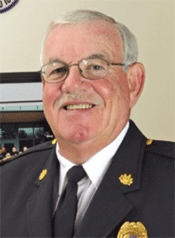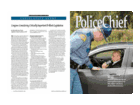 As the summer holiday season begins, we embark on a fun and exciting time for many—vacations, warm weather, and family celebrations. Unfortunately for some, the joy of the summer season will be cut short by encounters with drug- or alcohol-impaired drivers on our streets and highways. Arrests, spending time in hospitals, or attending funerals are hardly the way most of us want to remember our summer. Yet tragically, far too many of our citizens will do so because of drivers who were unable to safely operate their vehicles.
As the summer holiday season begins, we embark on a fun and exciting time for many—vacations, warm weather, and family celebrations. Unfortunately for some, the joy of the summer season will be cut short by encounters with drug- or alcohol-impaired drivers on our streets and highways. Arrests, spending time in hospitals, or attending funerals are hardly the way most of us want to remember our summer. Yet tragically, far too many of our citizens will do so because of drivers who were unable to safely operate their vehicles.
Despite the best efforts of law enforcement and educational authorities, impaired driving remains a leading cause of death in many nations, and impaired drivers account for a significant percentage of traffic-related fatalities, injuries, and crashes. The threat to our citizens is grave. While the number of impaired driving fatalities has decreased significantly in recent years, there is still much to be done. According to the National Highway Traffic Safety Administration (NHTSA), about three in every ten Americans will be involved in an impaired driving crash at some point in their lives.
Impaired driving is one of America’s most frequently committed and deadliest crimes—in 2008, 37,000 families lost a loved one. Speed, alcohol, distracted driving, and lack of proper restraint use continue to confound law enforcement efforts to keep motorists safe and secure. However, highly visible and sustained law enforcement efforts, more effective domestic and international safety laws, new motor vehicle safety technologies, increased resources, and improved highway infrastructure have helped the United States and other countries significantly reduce fatalities.
Much progress has been made in law enforcement’s efforts in traffic safety initiatives; the overall number of crash-related fatalities in 2008 was 37,261, the lowest it has been since 1961—even though we now have more people on the road traveling longer distances. A recent National Occupant Protection Use Survey (NOPUS) tells us that 82 percent of Americans are wearing their seat belts, and in 2007, 55 percent of drivers involved in fatal crashes did not buckle up.
However, law enforcement continues to face new challenges that were not a problem just a few years ago. The impaired driving problem today can be compounded because drivers are not always impaired by alcohol alone. Many of them are impaired because they are under the influence of illegal, mind-altering drugs—either taken alone or in combination with alcohol. Although the nation has clamped down on drunk drivers over the past decade, many drugged drivers go unnoticed and unreported. Although the decrease in alcohol-impaired driving numbers is encouraging, the same decrease is not reflected for driving under the influence of drugs.
Drugs, both illicit and prescription, are increasingly being detected in chemical tests in many fatal and injury-inducing crashes. The increased use of Drug Recognition Experts (DREs) has given us an idea of the increased number of drugged drivers on the road. Later this month, I will be speaking at IACP’s DRE conference on the importance of combating drugged driving and one issue that is increasingly alarming to me: the growing presence of marijuana in drugged driving cases.
I believe that the many states and the District of Columbia that have embraced medical marijuana will see an increase in drug-impaired crashes and crime. The IACP is greatly concerned about this problem and will closely monitor developments on our nation’s highways. These new laws are almost certain to exacerbate an already growing problem.
The most recent data we have from NHTSA found that 16.3 percent of nighttime weekend drivers were drug positive. The survey further found that the drugs used most commonly by these nighttime drivers were marijuana (8.6 percent), cocaine (3.9 percent), and methamphetamine (1.3 percent). Unfortunately, these are the only statistics we have and so I encourage your agency to assist in reporting these cases to NHTSA.
The leadership of the law enforcement community is critical if we are to reduce the fatalities and injuries caused by drug- and alcohol-impaired drivers. We know that traffic enforcement saves lives and also helps to identify or prevent other criminal activity.
I encourage you and your agencies to reenergize and reengage your enforcement efforts in highway safety, not only through the summer but throughout the year, through national mobilization efforts such as Click It or Ticket and Over the Limit, Under Arrest. Traffic enforcement is real law enforcement and is often an invaluable tool in the detection of other crimes and the apprehension of suspects with outstanding warrants.
Finally, I encourage all law enforcement agencies to join the effort to reduce drug-impaired driving-related deaths, injuries, and property damage by making the detection, investigation, and prosecution of drug-impaired drivers a high priority and by taking advantage of all opportunities to raise public awareness of the driving-under-the-influence-of-drugs issue through media statements, public service announcements, press releases, high-visibility enforcement, and public information campaigns. ■
Please cite as:
Michael J. Carroll, “Prioritize Safe Driving during the Summer Season,” President’s Message, The Police Chief 77 (July 2010): 6.
|
|



